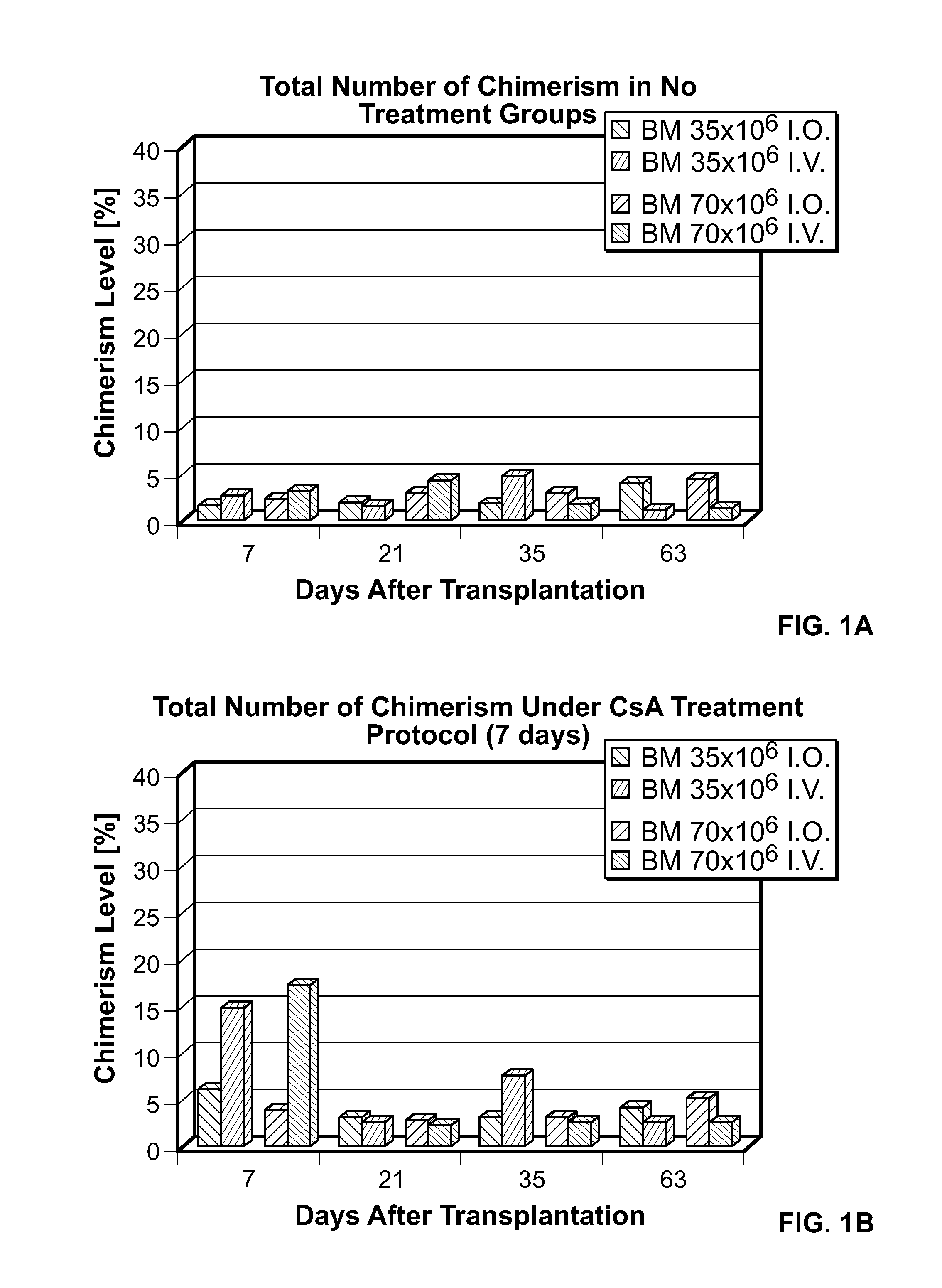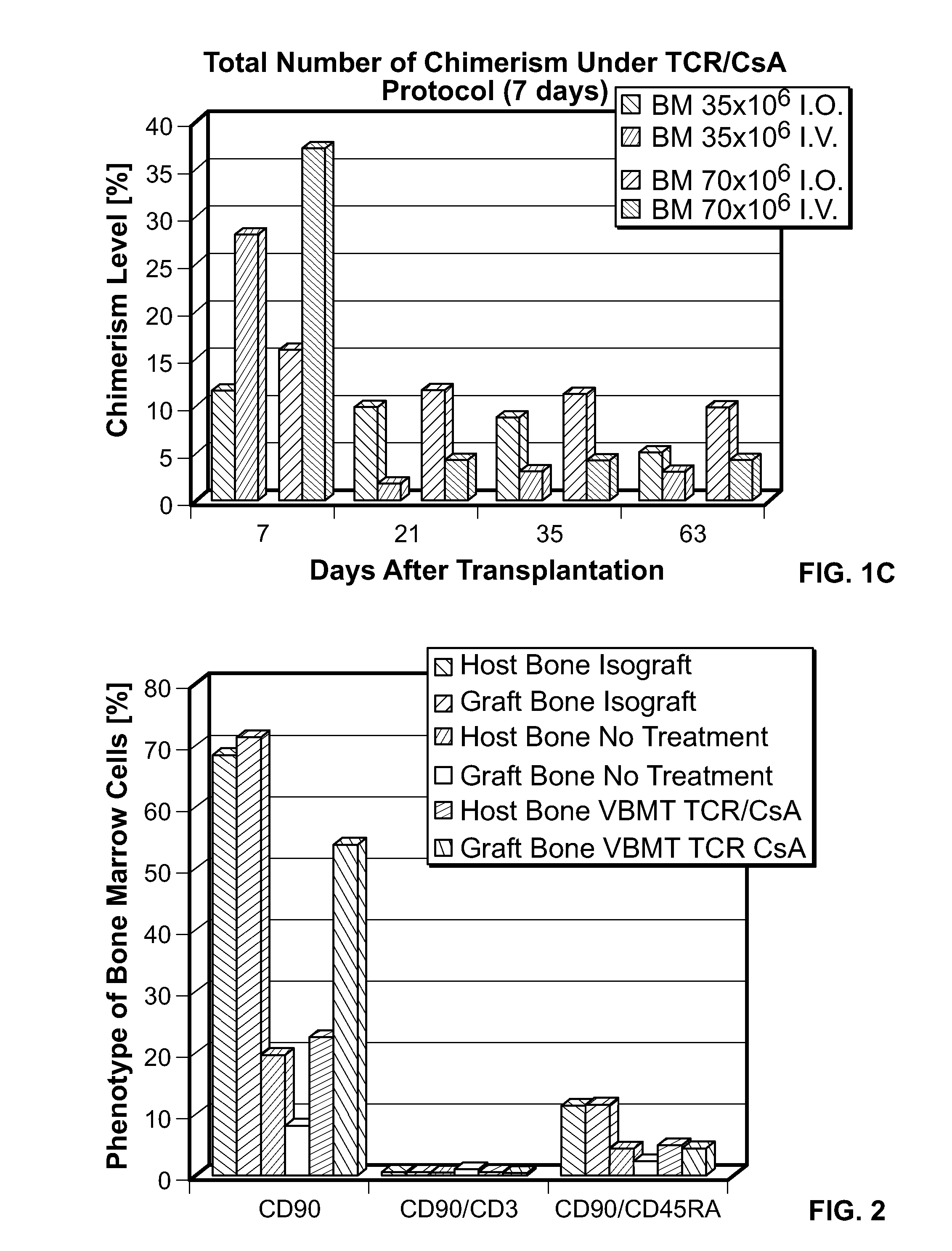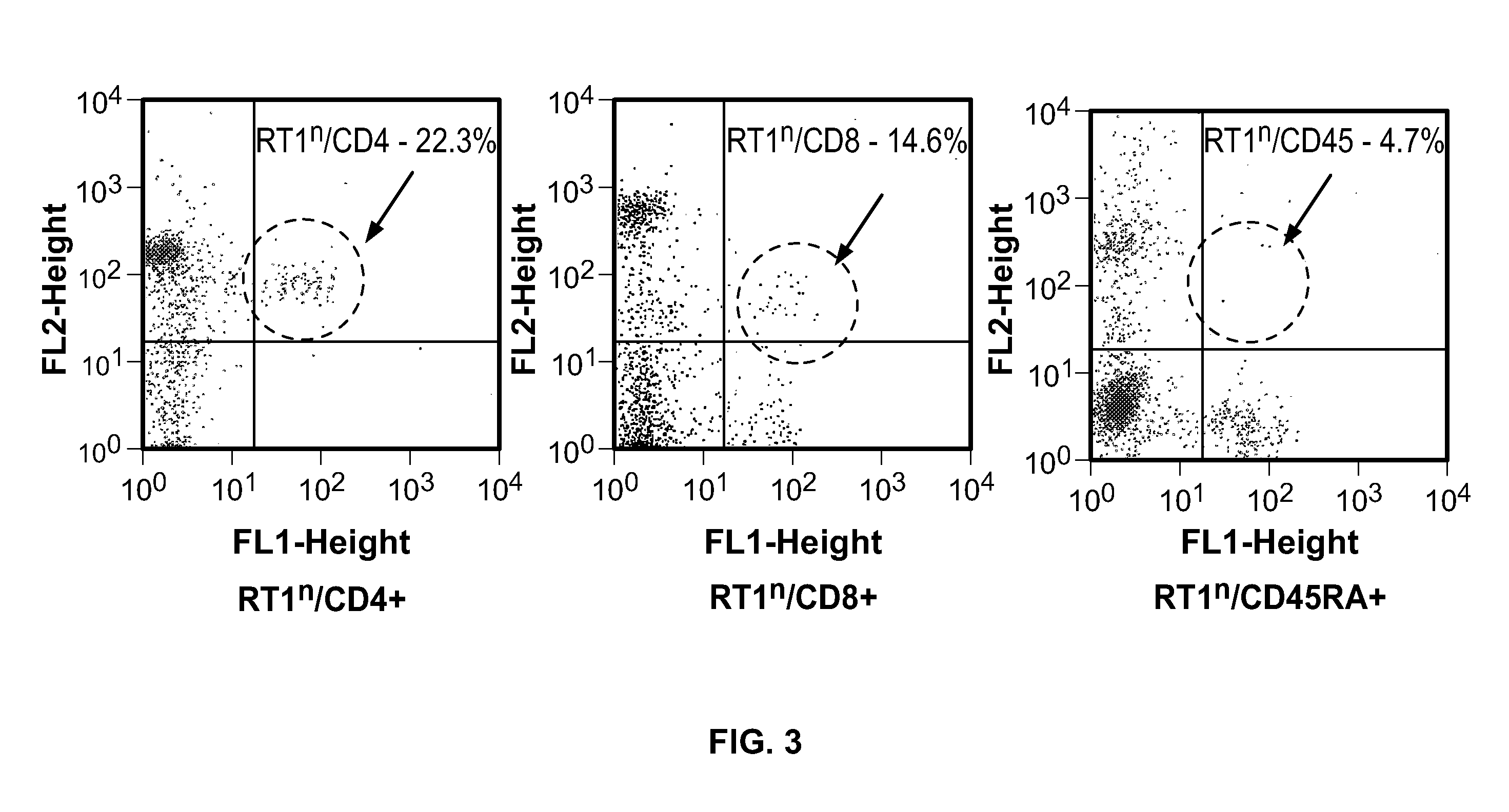Tolerance induction and maintenance in hematopoietic stem cell allografts
a technology of allografts and tolerance, applied in the field of immunology, can solve the problems of prohibitive morbidity and mortality of allogeneic hematopoietic stem cell transplantation protocols, gvhd poses risks of infection and malignancy, and achieves the effect of inducing allograft tolerance and/or maintaining long-term recipient tolerance of allografts
- Summary
- Abstract
- Description
- Claims
- Application Information
AI Technical Summary
Benefits of technology
Problems solved by technology
Method used
Image
Examples
example 1
[0118]Transplantation of donor-derived stem cells can improve organ allograft survival in animal models. This study was designed to investigate the effect of different routes of stem cell transplantation (SCT) on donor specific tolerance induction across MHC barrier under short-term CsA monotherapy and αβ TCR / CsA treatment protocols.
[0119]Methods: Forty-eight SCT were performed between BN(RT1n) donors and Lewis (RT11) recipients. Intraosseous and intravenous SCT was studied in 6 groups of 8 animals each receiving 35×106 (n=4) and 70×106 (n=4) SCT. Groups I and II served as controls and received SCT but no treatment. Groups III and IV received CsA monotherapy for 7-days, Groups V and VI were under αβ TCR / CsA protocol for 7-day. Flow cytometry analysis was used for evaluation of immunodepletion of T-lymphocytes and multilineage donor specific chimerism for MHC class-I (RT1n) for RT1n / CD4, RT1n / CD8 and RT1n / CD45RA antigens in peripheral blood of recipients at post-transplant days 7, 21...
example 2
[0125]Composite tissue allografts such as human hand comprise vascularized bone marrow as a part of allograft transplantation. This example evaluates the efficacy of vascularized bone marrow (VBMT) and hematopoietic stem cell transplantation (HSCT) on development of chimerism and induction of donor specific tolerance.
[0126]Methods: Thirty six vascularized bone marrow (femur) transplants (VBMT) containing 50×106 to 70×106 cells were performed across MHC barrier between Brown Norway (BN; RT1n) donors and Lewis (LEW; RT11) recipients in six experimental groups of six animals each. Isograft controls between isogenic Lewis rats included group 1—VBMT and group 2 (VBMT+HSCT) without treatment. Rejection controls between BN and LEW rats included group 3—VBMT and group 4 (VBMT+HSCT) without treatment. In treatment groups across MHC barrier (BN to LEW) group 5—VBMT and group 6 (VBMT+HSCT), allograft recipients were subjected to 7 day protocol of αβ TCR mAb / CsA therapy. Intraosseous HSC transp...
example 3
[0130]The induction of chimerism and phenotype of bone marrow (BM) cells was assessed following vascularized bone marrow (VBM) transplantation in MHC mismatched rat pairs under combined αβ T-cell receptor monoclonal antibody and cyclosporine A (αβ TCR mAb / CsA) protocol.
[0131]Method: Eighteen VBM transplantations were performed in three groups of 6 animals each. Lewis (RT11) to Lewis isotransplants were performed in Group 1 and served as isograft controls (n=6). In group 2 and 3 allotransplants across full-MHC barrier were performed from BN(RT1n) donors to Lewis recipients. Allograft rejection controls in Group 2 did not receive any treatment (n=6), whereas Group 3 allografts were treated with combined αβ TCR mAb / CsA protocol for 7 days (n=6).
[0132]Flow cytometry (FC) was used for evaluation of immunomodulation of T-lymphocytes and donor-specific chimerism for MHC class-1-RT1n antigens at day 7. Phenotype of bone marrow (BM) cells in grafted and host bone was assessed at day 7.
[0133]...
PUM
| Property | Measurement | Unit |
|---|---|---|
| time | aaaaa | aaaaa |
| time | aaaaa | aaaaa |
| time | aaaaa | aaaaa |
Abstract
Description
Claims
Application Information
 Login to View More
Login to View More - R&D
- Intellectual Property
- Life Sciences
- Materials
- Tech Scout
- Unparalleled Data Quality
- Higher Quality Content
- 60% Fewer Hallucinations
Browse by: Latest US Patents, China's latest patents, Technical Efficacy Thesaurus, Application Domain, Technology Topic, Popular Technical Reports.
© 2025 PatSnap. All rights reserved.Legal|Privacy policy|Modern Slavery Act Transparency Statement|Sitemap|About US| Contact US: help@patsnap.com



